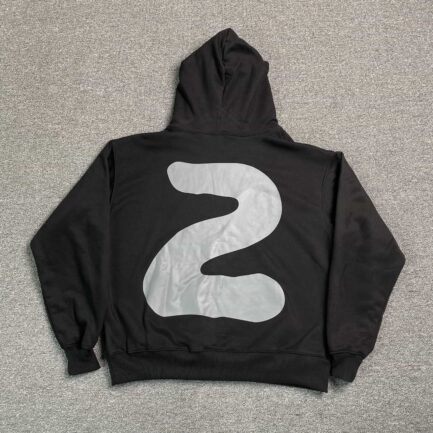In the world of fashion, few garments are as universally loved as the hoodie. This once humble piece of clothing has transformed over the years into a symbol of comfort, style, and cultural identity. From its origins as workwear in the 1930s to becoming a staple in streetwear culture today, the hoodie has evolved into a versatile and essential item in the wardrobes of millions across the globe. In this article, we’ll explore the factors contributing to the hoodie’s popularity, the growth of the hoodie market, and the key trends shaping its future.
1. The Evolution of the Hoodie
The hoodie’s history begins in the 1930s when American sportswear brand Champion first introduced it to protect athletes and workers from the cold. It was originally designed as a practical piece of clothing, with a drawstring hood for extra warmth and a kangaroo pocket to keep hands warm. However, over time, the hoodie transcended its utilitarian purpose and became a symbol of different subcultures.
In the 1970s, the hoodie became associated with hip-hop culture, which further fueled its popularity in urban areas. Throughout the 1990s, the garment’s presence exploded, becoming a go-to item for streetwear enthusiasts, skateboarders, and athletes alike. By the early 2000s, high-fashion designers had taken notice, incorporating hoodies into their collections and bringing the item into the luxury fashion scene.
Today, hoodies are embraced by people of all ages and backgrounds, available in endless styles, from minimalist designs to bold statement pieces. The hoodie is no longer just a casual item but a fashion-forward garment that can be dressed up or down, depending on the occasion.
2. The Rise of Streetwear and Its Impact on the Hoodie Market
One of the most significant factors driving the hoodie’s growth is the rise of streetwear culture. Rooted in urban environments, streetwear has evolved into a global fashion movement that blends elements of skate, hip-hop, sportswear, and luxury fashion. The hoodie, as one of streetwear’s signature pieces, is often seen as the perfect canvas for self-expression and brand identity.
Streetwear brands such as Supreme, Off-White, Stüssy, and BAPE have capitalized on the hoodie’s appeal by releasing limited-edition drops that create a sense of exclusivity and urgency. These drops often sell out within minutes, creating a strong resale market where hoodies can sell for several times their retail price. The demand for streetwear hoodies has also pushed traditional fashion brands to adapt, leading to collaborations between high-end designers and streetwear labels. This crossover has only further cemented the hoodie’s place in both high fashion and everyday wear.
As a result, the hoodie market has expanded exponentially. Global fashion analytics firm Edited reports that between 2017 and 2022, the sale of hoodies increased by over 80%. The influence of streetwear culture is a significant driver of this growth, with both legacy and emerging brands embracing the hoodie’s versatility and universal appeal.
3. Sustainability and the Future of the Hoodie Market
Sustainability is one of the most pressing issues in fashion today, and the hoodie market is not immune to the challenges it presents. As consumers become more conscious of the environmental impact of their purchases, brands are beginning to explore more sustainable production practices. From sourcing organic cotton and recycled materials to minimizing water usage and carbon emissions during manufacturing, there’s a growing focus on reducing the hoodie’s ecological footprint.
Brands like Patagonia, Pangaia, and Broken Planet are examples of companies prioritizing eco-friendly initiatives. These brands offer hoodies made from sustainable materials, such as recycled polyester, hemp, or organic cotton, and focus on ethical labor practices. As awareness around sustainability continues to rise, more brands are expected to follow suit, making eco-friendly hoodies a major trend in the coming years.
The rise of second-hand and resale platforms has also contributed to the sustainability movement in the hoodie market. Websites like Depop, Grailed, and The RealReal allow consumers to buy and sell pre-owned hoodies, giving these garments a second life and reducing waste in the process. The success of these platforms shows that consumers are not only looking for stylish, high-quality hoodies but are also considering the environmental and ethical aspects of their purchases.
4. The Role of Social Media and Influencer Culture
Social media has played a pivotal role in the hoodie’s rise to fashion stardom. Platforms like Instagram, TikTok, and YouTube have given streetwear enthusiasts and influencers a global stage to showcase their personal style, with the hoodie often serving as a key component of their looks. The power of influencer culture cannot be understated; a single Instagram post from a well-known fashion influencer or celebrity can propel a hoodie brand into viral status, leading to skyrocketing demand.
Brands leverage social media to create hype around new hoodie releases, often partnering with influencers or celebrities for collaborations. The ability to build a community around a brand or a product drop is essential for success in today’s market. The hoodie, with its association with youth culture and its adaptability to different styles, naturally lends itself to this digital age of marketing.
Influencers and streetwear aficionados are also known for creating and popularizing styling trends. Whether it’s oversized hoodies, graphic prints, or monochromatic looks, what’s seen online often translates into what’s worn in the streets, further driving sales. Social media has essentially democratized fashion, allowing smaller hoodie brands to gain visibility alongside established giants, contributing to the overall expansion of the hoodie market.
5. Customization and Personalization in Hoodie Fashion
As consumers look for ways to stand out in an increasingly saturated fashion market, customization and personalization have become key trends in the hoodie industry. Custom hoodies allow individuals to express their personality, interests, or affiliations, whether through unique graphic designs, embroidered logos, or DIY modifications.
Many brands, such as Nike and Champion, offer customizable hoodie options where customers can choose colors, fonts, and other design elements. This trend taps into the desire for individuality and uniqueness in fashion. Beyond that, small independent brands or Etsy sellers often create one-of-a-kind hoodie designs, catering to niche markets and specific customer interests.
Personalization is particularly popular among streetwear enthusiasts, who often seek limited-edition or bespoke items to set themselves apart from the masses. For brands, offering customizable options is a way to engage with their audience and build brand loyalty, as customers are more likely to purchase a product that feels uniquely theirs.
6. The Future of the Hoodie Market
The future of the hoodie market looks promising, with no signs of slowing down. As the lines between casual and formal wear continue to blur, the hoodie’s versatility will likely keep it at the forefront of fashion. Streetwear’s ongoing influence, combined with the growing demand for sustainable and customizable options, suggests that the hoodie will remain a dominant force in the fashion industry for years to come.
Moreover, the global appeal of the hoodie means that it’s not confined to one demographic or geographic region. Whether it’s being worn by a tech CEO, a high school student, or a professional athlete, the hoodie has the unique ability to transcend social boundaries. This universal appeal, coupled with the constant innovation seen in hoodie design, ensures that it will continue to evolve and adapt to the changing landscape of fashion.
Conclusion
The hoodie has come a long way from its beginnings as practical workwear. Today, it’s a symbol of comfort, style, and self-expression, beloved by people from all walks of life. As the hoodie market continues to grow, driven by streetwear culture, sustainability initiatives, and social media influence, it’s clear that this iconic garment is here to stay. Whether you’re looking for a high-fashion statement piece or a cozy staple, the hoodie offers endless possibilities, making it one of the most versatile items in modern fashion.









